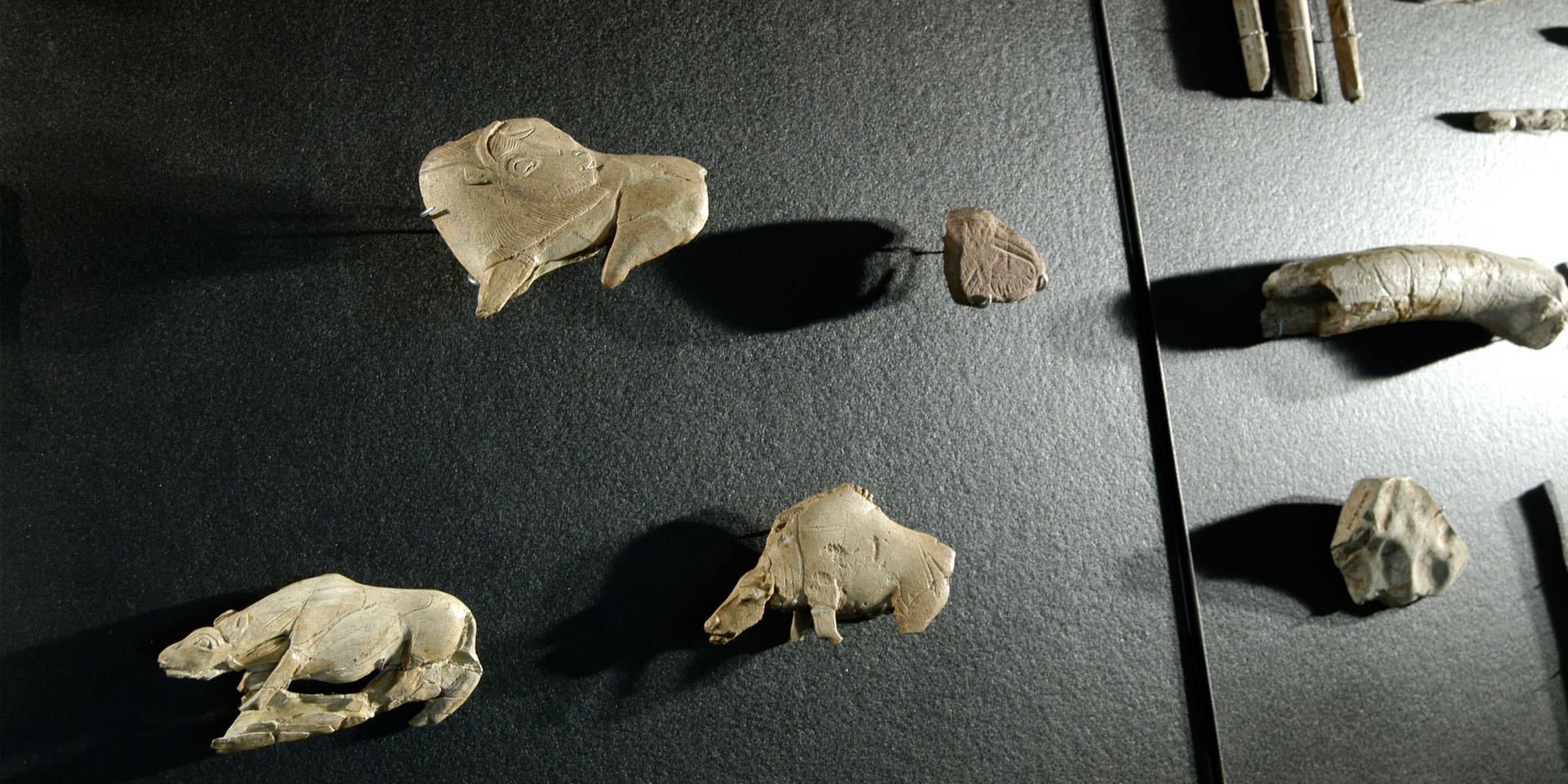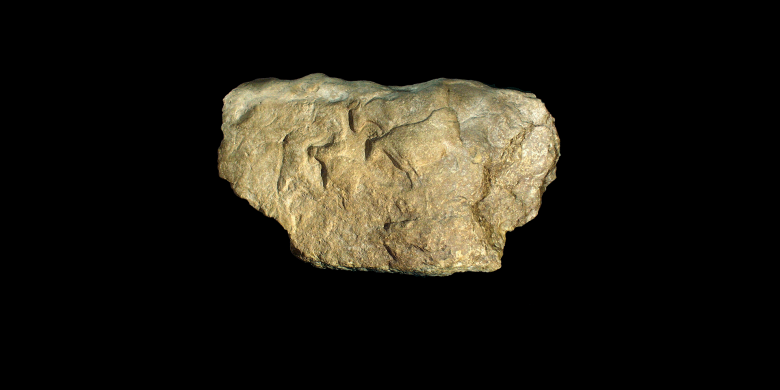The creation of the collections
Prehistory remains very closely tied to Périgord and, in particular, the Valley of the Vézère where, starting in the last century, men and women driven by a passion for their origins and with an appetite for science have never stopped exploring to find relics of their distant ancestors in the depths of the earth.
This long quest led to an extraordinary wealth of prehistoric caves and exceptional sites, as well as allowing for the accumulation of precious relics. This patiently directed work finally led to the discovery of the incredible longstanding age of Man, his rich and complex history, his surprising ability to adapt to a changing environment, his predispositions to renew his way of life, his know-how and his vision of the world.
The National Prehistory Museum of Les Eyzies-de-Tayac, in the very heart of Périgord, is the direct result of this movement of interest for the most distant past of humanity. At the same time a place of memory of the history of prehistory, an object conservatory, a study centre, a place of publication of acquired knowledge and also constantly evolving, it has been a site recognised by prehistorians and the public since its creation. But in order to last, this privileged place is dependent upon the museum’s ability to update its collections.
One of the important moments in the history of the collections is closely linked to the activity of Denis Peyrony, an tireless researcher whom we have to thank for the discovery of numerous sites that were the source of the first pieces of the collections and the origin of the creation of the Les Eyzies museum in 1913; we also have him to thank for giving the museum a unique mission focusing on ancient prehistory (400,000 to 8,000 B.C.).
This mission has kept on and was reaffirmed during the last twenty years, an important time during which the collections were acutely considered. The post-war period was a particularly active one as well as being a productive one for archaeology. Great discoveries were made, methods and means of excavating and research were transformed, knowledge about prehistoric man, his way of life, his environment all progressed considerably, making it necessary to seriously adapt the museum that saw the establishment of collections as having become a fundamental preliminary condition.
For this purpose, the scientific and cultural project formulated for the renovation of the museum defined the main development areas of the museum visit route: providing an exhaustive and chronologically-based panorama of prehistoric cultures that arrived one after the other in Périgord starting from the oldest discoveries (400,000 B.C.) all the way to the great upheavals that marked the end of the ice ages (around 8,000 B.C), making the great cultural moments that marked the evolution of ancient prehistory clear and discernible, placing the life of prehistoric humans in their natural environment, finally presenting different aspects of their lifestyle (dietary activities, transformation of raw materials, dwellings, funerary traditions, jewellery and art).
It was a gamble and most likely impossible to accomplish without the energetic collection enrichment policy that has been applied by the team of the national museum since the late 1980’s and that finally led to the arrival of a large part of the archaeological artifacts that came from the excavations done in Périgord since the end of World War II, to the expansion of its territorial mission to the greater southwest and beyond, to filling in certain chronological gaps, to the reception of well-documented scientific collections, and to complete certain areas such as art, palaeoanthropology or fauna. Finally it will have been decisive for the conception of permanent exhibition spaces like the “Passage of Time”, fauna notes, important cultural moments, technologies and the arras of stone or bone tools characteristic of different prehistoric epochs.
The number and the typology of the acquisitions made during this period, essentially from Périgord or Lot, are remarkable. Beyond the classic sites, they relate to complete archaeological ensembles coming from stratigraphic caves including several cultural levels (sites like Solvieux, Las Pélénos, Chabanetas…), sets that complement existing museum collections (Roc de Gavaudun, Moulin du Milieu…), elementary sets corresponding to mono-activities (Plateau-Parrain, “Burin” station, the Maîtreaux…), reference caves (Les Tares, Les Peyrugues…) or objects or unique sets (horse engraved in bone from La Faurélie, ibex frieze from the Wattelin collection, artifacts from the Lascaux caves…).
It is no less important to insist upon the fact that a large number of these recent acquisitions are richly documented, which is essential for understanding them and for their museographic use, sometimes completed by library collections.
Certain acquired collections have an even greater value as they are the result of a life that has been completely dedicated to Prehistory. Amongst the most distinguished scientific personalities, we have to thank for this considerable prehistoric national heritage that has been passed down to us today, we should note: F. Bordes, J. Gaussen, L. Pales, G. Laplace, G. Bonifay, J.-P. Texier, Cl. Barrière, P. Fitte, J.-Ph. Rigaud, J. Tixier. We should also add the large submission of National Relics (portable art from La Madeleine of the Denis Peyrony collection) and the contributions of hundreds of private donor who contributed to the enrichment of the collections.


